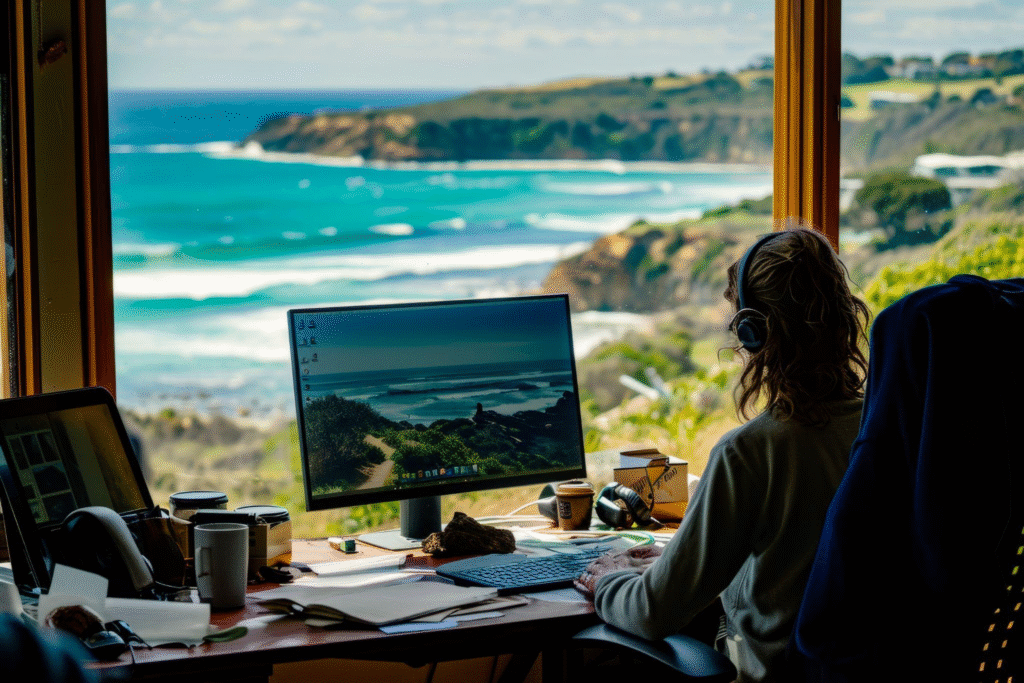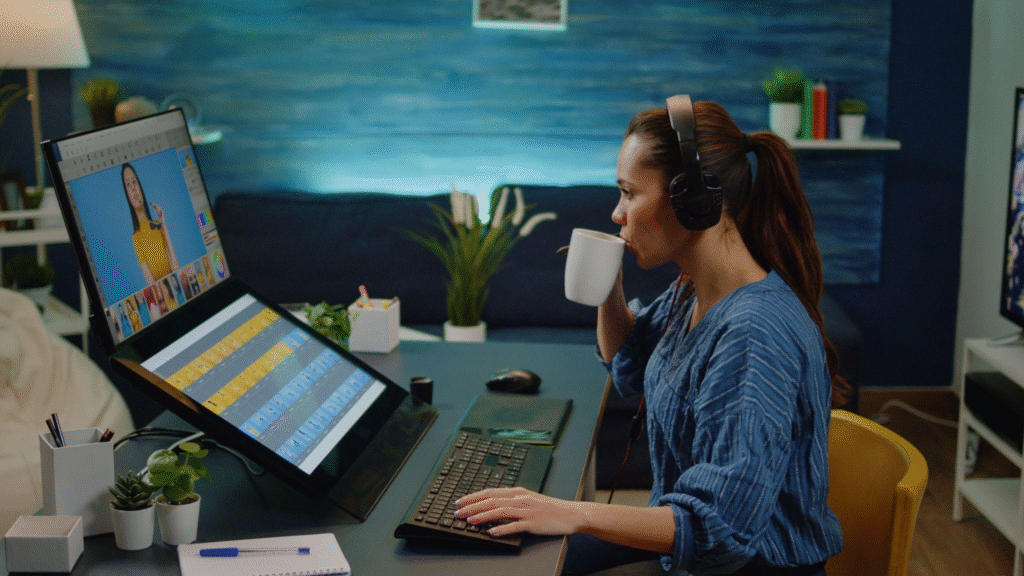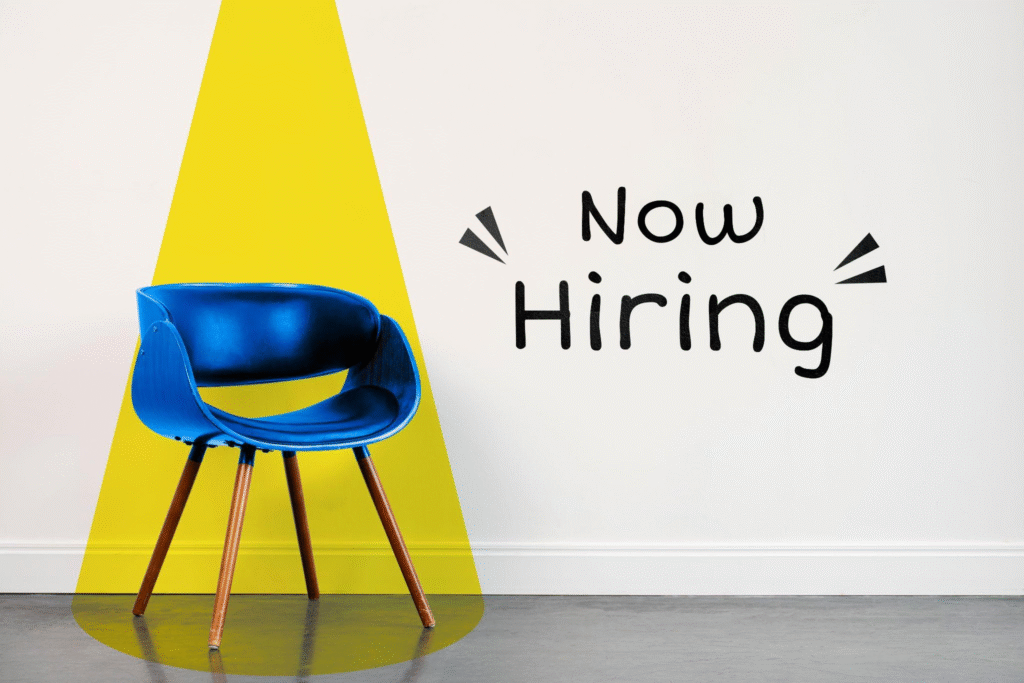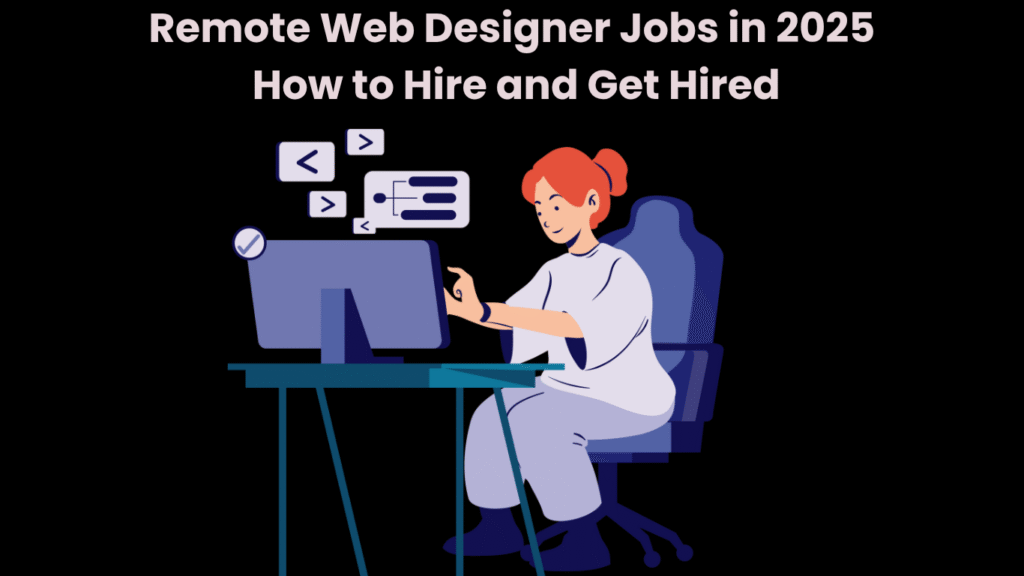Remote Web Designer Jobs 2025: The Complete Guide to Remote Hiring and Getting Hired
Remote work isn’t just a trend anymore…it’s the new norm for creative professionals. Web designers, in fact, love working remotely within distributed teams, collaborating using tools such as Figma, Sketch, and Webflow.
As a company needing to hire the best, or as a designer wanting to find your next dream gig, this guide has got you covered.
From acquiring the core skills that employers look for to understanding how to locate the optimum remote job postings, navigating this space requires a strategic approach. You will also learn how to build an impressive online portfolio, how to communicate effectively in a virtual setting, and how to stay productive across zones. With design trends and remote work culture changing increasingly, knowledge gives designers and hiring managers a competitive advantage in today’s high-speed digital economy.
This book also contains tips on compensation expectations, contract versus full-time employment, and how to stand out among an international talent pool. If you’re new to working remotely as a designer or must expand your creative team, these tactics and advice are meant to make you a success in the digital workplace today.

Why Remote Web Designers Are in High Demand
Remote web design jobs provide unprecedented autonomy and potential. With knowledge of trends, skills development, and use of the proper tools, both employers and designers are able to prosper in the changing digital world. Remote workers and employees can start using an insightful app to better manage productivity and team performance, with real-time tracking and actionable insights.
From a graphic design career changer to become a web designer to an experienced software engineer working alongside a product manager, all remote digital designers need to become pros at Adobe Creative Suite. Senior web designer applicants tend to feature product design portfolios that demonstrate their UX credentials.
Top marketing and web design professionals in LATAM can be drawn in by employers promoting remote web designer positions and other remote opportunities on Pros Marketplace.
Access to a worldwide pool of talent
Flexible work hours that improve creativity
Lower overhead for business owners

Remote working also allows for more diversity, promoting collaboration between creative and culturally diverse professionals. Designers can pick projects of their choice, resulting in more creative outputs. Asynchronous workflows enable teams to achieve steady progress independently of time zones, and cutting-edge project management tools such as Figma, Slack, and Trello ensure smooth communication. For companies, this model promotes quicker scaling and economical hiring, and remote web design becomes a strategic move in the current competitive environment.
As businesses continue to adopt digital-first models, the need for adaptable and forward-looking remote web designers will only grow. Those who invest in ongoing education, keep up with design trends, and have a solid online portfolio will continue to be in high demand in the global market.
Core Skills & Tools Employers Expect
| Skill | Description | Recommended Tools |
|---|---|---|
| UI/UX Design | Craft intuitive user experiences | Figma, Adobe XD |
| Responsive Layouts | Mobile‑first, cross‑browser compatibility | CSS Grid, Flexbox |
| Prototyping | Interactive mockups for stakeholder feedback | InVision, Marvel |
| CMS & No‑Code | Rapid site deployment | Webflow, WordPress |
Where to Find Remote Web Designer Jobs
- Job boards: Pros Marketplace, Dribbble or RemoteOK
- Talent marketplaces: Upwork and Toptal
- Company career pages: Search for “remote” or “distributed” in postings
- Salary Expectations Across LATAM
Salary Expectations Across LATAM
Salaries vary by location and seniority. Mid-level designers in Mexico City take home around $35k–40k USD, whereas those in Colombia and Argentina will earn slightly less but have lower living expenses. Employers must factor in local cost of living and the Better Jobs Index when benchmarking.
Tips for Employers Hiring Remotely

- Portfolio over pedigree: Focus on real projects and UI/UX case studies.
- Structured onboarding: Provide design systems, brand guidelines, and clear KPIs.
- Time-zone overlap: Schedule core hours for synchronous collaboration
- Curate an exceptional portfolio with responsive examples.
- Network in LinkedIn and design communities.
Tips for Designers Seeking Remote Roles
- Curate a standout portfolio with responsive examples.
- Network on LinkedIn and design communities.
- Highlight soft skills: communication, adaptability, problem solving.
Top Remote Web Design Niches to Watch in 2025
Remote web design is becoming more specialized, and that is good news for designers who want to stand out. In 2025, the demand for high-quality work in e-commerce design, with clean designs and conversion-driven pages at the forefront, is anticipated. Many brands now prefer working with an experienced eCommerce Web Design Company to ensure professional results and scalable solutions. SaaS businesses are seeking designers who can design intuitive dashboards and smooth user flows. Accessibility-led design is also at the forefront, with brands increasingly pledging to make inclusive experiences. Web3 projects are presenting new avenues for creatives who are familiar with crypto and decentralized interfaces. If you’re skilled in any of these areas, you’ll be in a strong position to land top remote gigs.
Design Trends Shaping Remote Work in 2025
Design is always evolving, and 2025 brings some exciting trends—especially for remote teams. Minimalist design is still going strong, with plenty of clean space, bold fonts, and sharp visuals. Styles like glassmorphism and neumorphism are making interfaces feel more dynamic and modern. Motion graphics are ubiquitous now, assisting in telling more engaging product stories. Blender viewport controls have also become more intuitive, helping designers bring motion elements to life with better precision. AI-driven tools—such as Framer AI or Uizard—are accelerating mockups and prototyping. And Figma plugins are facilitating real-time collaboration in ways never seen before. Keeping up with these trends can keep remote designers fresh, quick, and in-demand.
Remote Design Interview Tips (for Employers & Designers)
Remote interviews are slightly different from in-person interviews—they’re not so much about your design chops as about how well you can work from anywhere. Designers should anticipate being able to discuss actual projects, demonstrate how they resolve user issues, and walk your interviewer through your process. Ensure that your portfolio also demonstrates your strengths in collaboration and communication. On the other hand, employers must be less concerned with theory and more concerned with hands-on work—such as providing a design exercise or experimenting with async communication. It’s really about getting individuals who not just design properly but also work well in a remote arrangement.
Future Outlook
The remote web design demand is anticipated to increase 25% by 2026 as e-commerce, SaaS, and mobile-first experiences grow. Motion graphics and accessibility upskilled designers will be in high demand and charge premium prices.
Read More: How to Get Hired for Remote Web Development Jobs
Conclusion
Remote web design is no longer niche—it’s a mainstream part of the global digital workforce. With an increased focus on user experience and agile, cross-functional teams by businesses, the worth of talented remote designers just keeps increasing. For companies, employing remotely translates into access to more varied and cost-effective talent. For designers, it means access to stimulating projects, flexible workspaces, and global visibility. Whether hiring or being hired, success in this arena is a function of preparation, clarity, and ongoing learning. Embrace the remote model, stay attuned to design trends, and maximize the right platforms to thrive in 2025 and beyond.
Frequently Asked Questions (FAQ)
- Are web designers able to work remotely?
Yes. Web designing is one of the most remote-friendly creative jobs today.
- Where can I find UI/UX remote work?
Experiment with Dribbble, RemoteOK, Pros Marketplace, and WeWorkRemotely.
- Are remote designers well compensated?
Remote web designers tend to be compensated competitively, on par with local positions, because of their skill and global market outreach. Some businesses also provide benefits such as flexible hours and lower commuting expenses, in addition to their pay package.
- Where are the best sites to put a design portfolio?
Sites such as Behance and Dribbble are lively communities ideal for presenting design portfolios and receiving exposure. Squarespace and WordPress enable the creation of personal websites with customized designs, showcasing both technical competence and individual design personalities necessary for remote web designer positions.
- What are typical pitfalls for remote designers?
Many remote web developers also face communication hurdles, with misinterpreted project objectives. A precise work-life balance can be difficult to maintain, with overlap of personal and work time. In addition, the absence of an exciting office environment can curb creativity, with the need to actively participate in internet communities to find inspiration.




